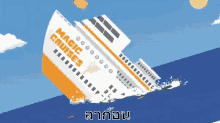

Rationale: Reading comprehension involves knowing what is happening in a story. An important aspect of reading comprehension is summarization. As an expert reader, understanding a reading involves being able to identify main ideas and supporting details. Summarization teaches the students how to pick the most important details of the story and present in a way that outlines the entire text. Students will receive their own article and delete unimportant or repeated information, superordinate items and events by using an umbrella term, and find a topic sentence that covers everything the writer is saying about the topic. This will allow them to create effective summaries, and comprehension will be tested through a set of questions.This lesson will help students learn how to find main idea and supporting details in a story so that they can summarize a text
Materials:
-
Copy of Hokey Pokey Song
-
Summarizing Hokey Pokey Song to display on the smartboard
-
Class set of summarizing bookmark
-
History of Crater Lake Article
-
Whiteboard/ white board markers
-
Remembering the Titanic Article
-
Class set of summarizing Worksheets (two for each student)
-
Rubric for Summarizing
-
Pencils or Highlighters
Procedures:
-
Say: Now that we are all expert readers, today we are going to learn about summarizing. Summarizing is when you look at a text and find the most important parts of the text. Summarizing is like you are telling your best friend a story, but you leave out some of the details. When you summarize, you find the main idea (the most important part of a story) and supporting details (facts or examples that tell more about the main idea).
-
Say: To learn about summarization, we are going to first learn the Summarizing Hokey Pokey. Does everyone know the Hokey Pokey? First we are going to do the Hokey Pokey to make sure we all know it. So I want everyone to stand up and it’s time to dance! [play/dance the Hokey Pokey]
-
Say: Everyone did awesome! Now that you all know the Hokey Pokey, we are going to learn the Summarizing Hokey Pokey. We will go through the song line by line and even create some new dance moves! [teach the Summarizing Hokey Pokey one line at a time and have students create their own dance moves; once students know the full song, have them sing/dance the Summarizing Hokey Pokey]
-
Say: Each of you have some great dance moves! Now we are going to practice summarizing. This is a bookmark to help you remember the steps of summarizing, but you can also use the Summarizing Hokey Pokey too! [pass out bookmark]
-
Say: “First let’s look at our 3 rules of summarization on the board. These along with a checklist you will get later will help you write a great summary of the text you read!
-
Cross out any unimportant or repeated information that isn’t essential to the message of the text. Find and highlight the important information that is essential to the text and that you need to remember.
-
Superordinate items and events. This means to find an “umbrella term” or terms for the events that happen in the text. (ex- general term such as sports for football, basketball, and baseball or animals for cats, dogs, and horses)
-
Form a topic sentence from your umbrella terms and the important information you highlighted that covers what the writer says about the topic.”
-
-
Say: Alright now that you have the Summarizing Hokey Pokey and a bookmark to help you summarize, we are going to try it with an article about how a lake called Crater Lake used to be a Volcano. (Pass out Crater Lake article and summarizing worksheet) How many of you have ever seen a picture of a Volcano or a super big lake? This article talks about how Crater Lake was formed because a Volcano exploded. As you read, think about the Summarizing Hokey Pokey [display lyrics on smart board] and the rules on your bookmark. When we are done reading, we will practice summarizing the article. [allow students time to read the article]
-
Say: So now that everyone had a chance to read the article, let’s go through it together and find the main idea and supporting details! Once we find the main idea, we can make a topic sentence and find 3 supporting details. There are a few questions to think about when finding the main idea and supporting details such as what is it about? What is the main point?
-
Say: Let’s look at the first paragraph of the reading [read first paragraph] Now we are going to work together to summarize the first paragraph. What do you think the first paragraph is about? [wait for answers] That’s right the first paragraph Oregon’s Crater Lake. That is the main topic of the first paragraph. Now that we know the topic, let’s find some supporting details that tell us about Crater Lake. Does anybody have any ideas that you think would be a supporting detail? [wait for answers] Awesome! Some things that can be considered supporting details could be: it is 1,943 feet, it is the deepest lake in the United States, 9th deepest lake in the world, sits where there used to be a volcano called Mt. Mazama. So if you were to write a summary, you would write a topic sentence: The topic of the first paragraph is Crater Lake. [write on white board] Then you write 3 supporting details. For example, you can write Crater Lake is the deepest lake in the United States. It is 1,943 feet. Crate Lake wasn’t always a lake, but instead a volcano!
-
Say: Everyone did a great job summarizing the paragraph! Now let’s look at the entire article. What do you think it is about? [wait for answers] Good job! On your worksheet, I want you to write: “The article is about a volcano exploding and making a lake.” Now what are 3 details about the lake? [write some answers on the white board] Good job! I want you to either write the answers on the board on your worksheet or write your own supporting details. Everyone did an awesome job on summarizing! I think it is time for you to try it on your own. [pass out article on Remembering the Titanic and another copy of the summarizing worksheet] I will be walking around the room to help if anyone needs me or to answer any questions.
-
Say: This article is called Remembering the Titanic. Has anyone ever been on or seen a cruise ship? This article is about a fancy ship like a cruise ship called the Titanic. While traveling the ocean, the Titanic accidentally hits an iceberg. What do you think happens when you hit an iceberg in a ship? While reading I want you to think about the song we learned [display lyrics on smartboard] and look at your bookmark. When you are done reading the article, I want you to fill out the worksheet and write a summary. If it helps, you can highlight the main idea and supporting details while you are reading the article. I will walk around the room in case you need help.
-
Say: Now that we have had some time to write out summaries, I want to ask you a few questions about the article. Then I want you to turn your worksheet over and write two words you did not know when reading the text. For example, some of you may not know what frigid means. When you come across a word you don’t know, ask yourself: What do I think this word means? Does it have something to do with water? Once you find a word you don’t know, I want you to look up the meaning in a dictionary. When I look up the definition, I learned that frigid means very cold in temperature. Now, I know what the word means, I will use it in a sentence. The pool water was frigid because it was the middle of the winder. Any questions? Now, I want each of you to find a word you didn’t know in the reading, write the definition and then use the word correctly in a sentence. I will walk around the room and help you.
-
Comprehension Questions
-
What ocean did the Titanic travel in?
-
North Atlantic Ocean
-
-
Where was the ship traveling to?
-
New York
-
-
How was the Titanic like a cruise ship?
-
gourmet meals
-
heated pools
-
squash courts
-
own onboard newspaper
-
-
How many lifeboats did the ship have?
-
Only 20
-
-
What were some of the flaws in the ship?
-
The bolts were weak
-
The bottom of the boat wasn’t built to withstand flooding
-
The steamship only had enough life-boats to hold half of the passengers
-
-
Why did the ship start to flood?
-
It hit an iceberg
-
-
Why do you think the ship didn't see an iceberg?
-
How long did it take for the ship to sink?
-
Less than 3 hours
-
-
Why do you thin people still talk about the Titanic today?
-
-
Say: When you are done writing your definitions and sentences, I want you to bring me your summaries and I will look at it to make sure you know how to summarize.
-
Assessment/Summarizing Rubric
-
In the student’s summary did they…
-
1. Write a topic sentence YES/ NO
2. Choose the correct main idea YES/NO
3. Write 3 supporting details. YES/NO
4. Delete insignificant information/repeating details YES/NO
5. Write two unknown text words, definitions, and sentences. YES/NO
Resources:
-
Cook, Emma. Reading to Learn Design: “Sailing into Summarization”
-
Other lesson designs/materials for reading: Reading Genie